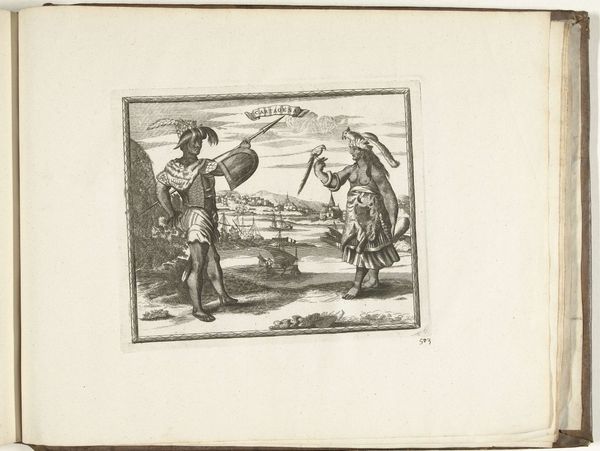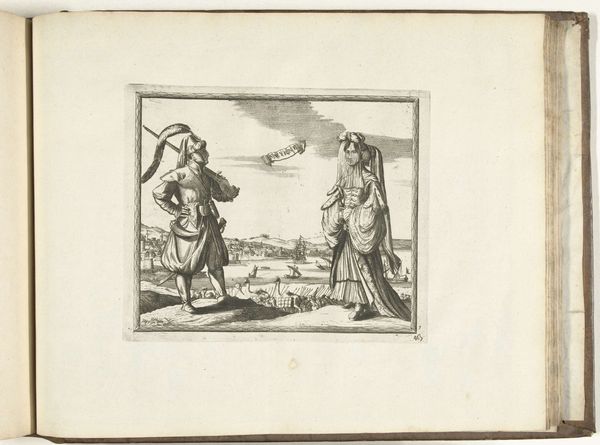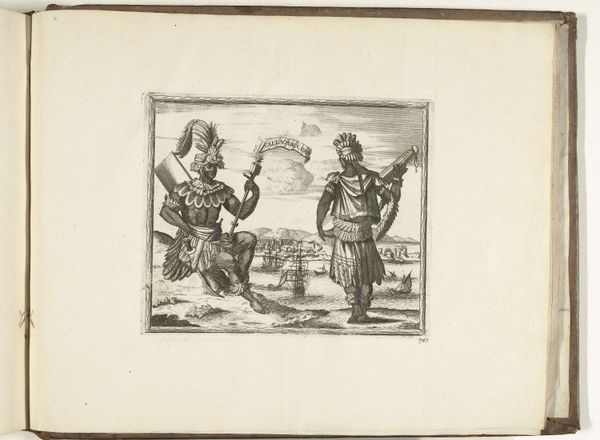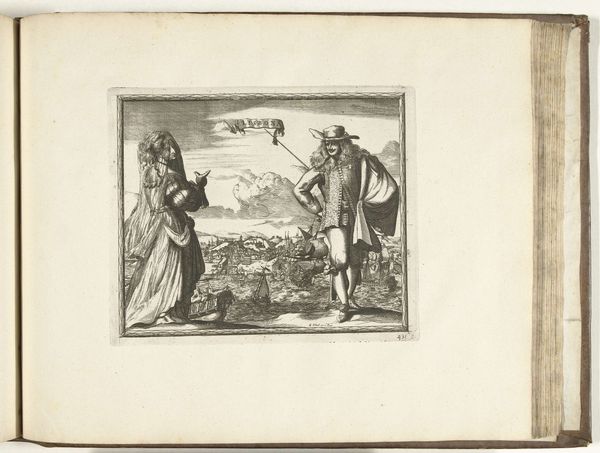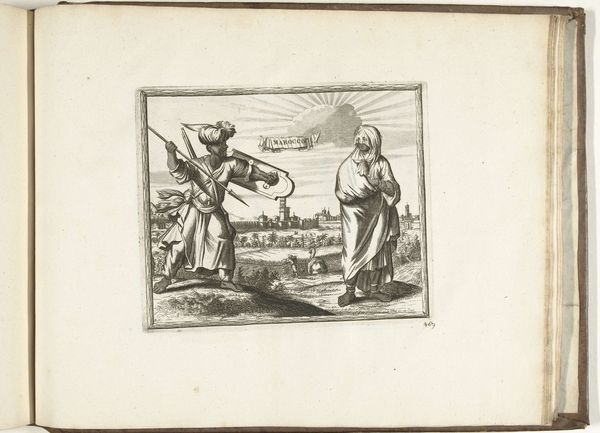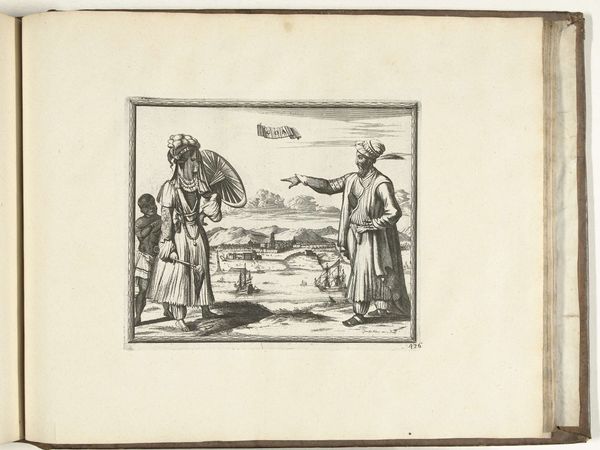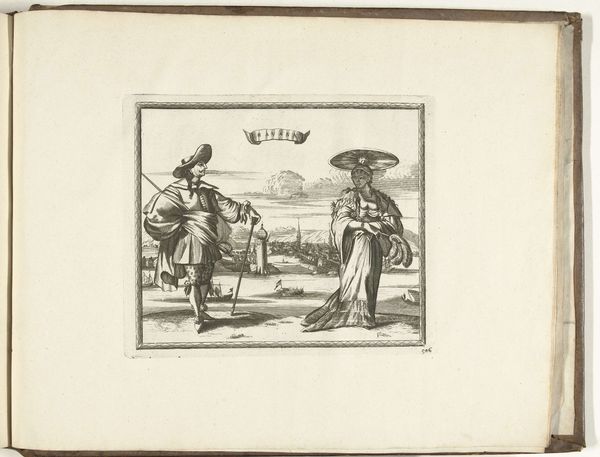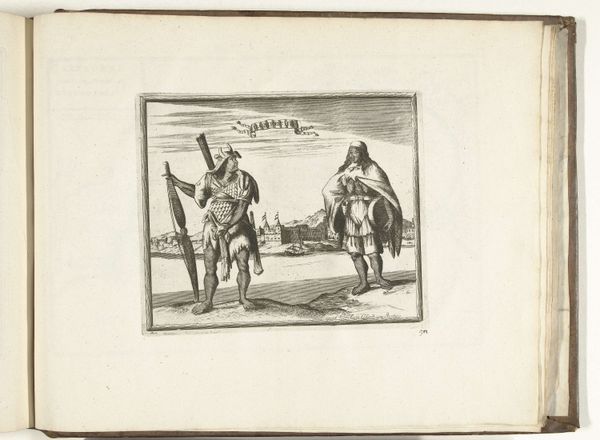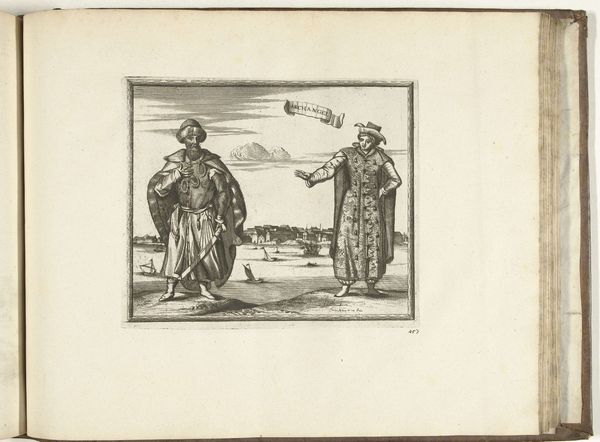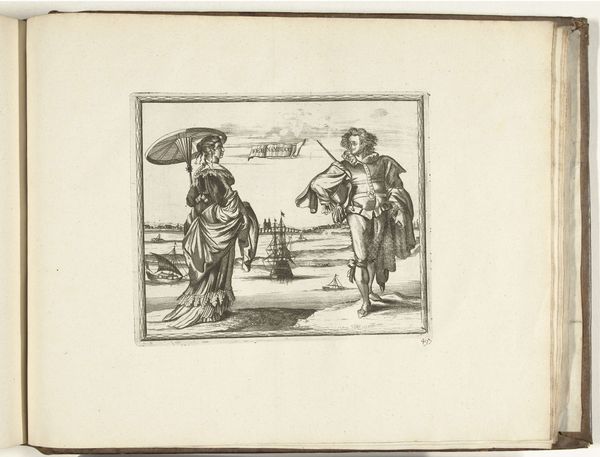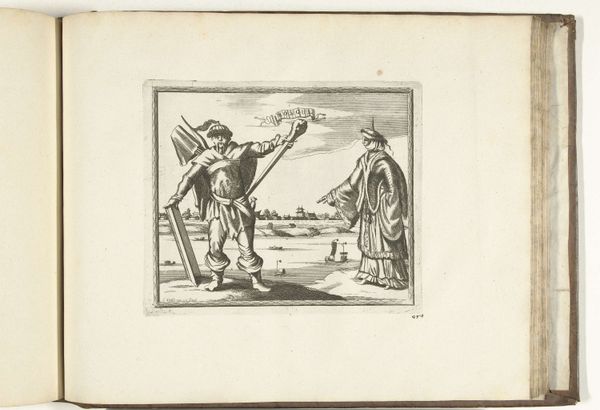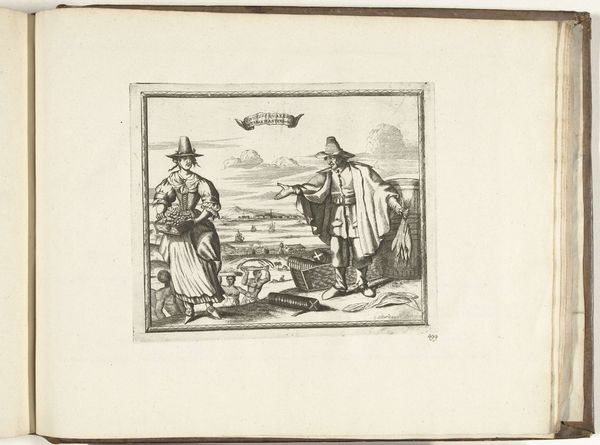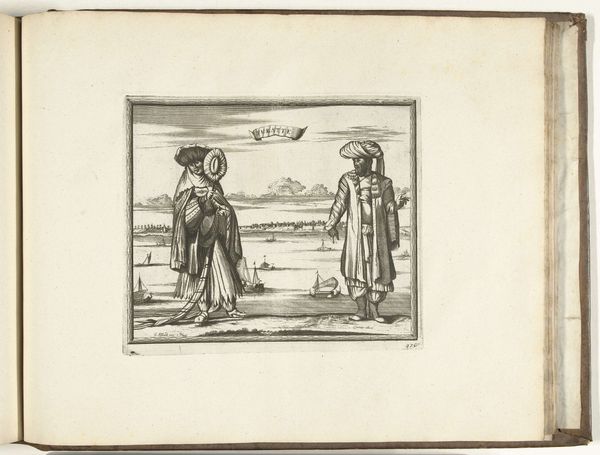
print, engraving
#
portrait
#
baroque
# print
#
landscape
#
engraving
Dimensions: height 174 mm, width 206 mm
Copyright: Rijks Museum: Open Domain
Editor: This engraving, titled "Kostuum van Hormoz, 1726" by Carel Allard, depicts two figures in what appear to be traditional garments. The backdrop features a landscape with ships. It strikes me as quite staged, almost theatrical. How do you interpret this work? Curator: It is theatrical, and it invites us to consider the narratives being constructed around the ‘Orient’ during this period. Think about the Dutch East India Company's reach and the rise of Orientalism. These images, these "costumes," are less about accurate representation and more about European fantasies. What do you notice about the figures' posture and placement in relation to the landscape? Editor: The male figure seems to be gesturing outward, presenting the scene, while the woman appears more introspective, almost like she’s observing herself. And, now that you mention it, the landscape looks more like a stage set than a real place. Curator: Precisely. These depictions often served to reinforce a sense of European superiority. By exoticizing and objectifying these ‘foreign’ figures, they solidified existing power dynamics. Notice, too, how this image flattens cultural specificity. It becomes a generalized "Eastern" image. This contributes to the erasure of actual lived experiences. Does it remind you of anything in contemporary media? Editor: Thinking about it now, yes, there are many examples where certain cultures are homogenized and used as a backdrop in fashion or film without deeper understanding. The visual language of power dynamics is constantly repeated. Curator: Exactly! This piece encourages us to be critical of the visual economies we participate in, both then and now. We need to always consider whose voices are being centered and whose are being silenced. Editor: I will never be able to look at Orientalist art again in the same way. Thanks, I see this in a new way now. Curator: That is the idea, yes. To question and engage, it’s always a journey.
Comments
No comments
Be the first to comment and join the conversation on the ultimate creative platform.
